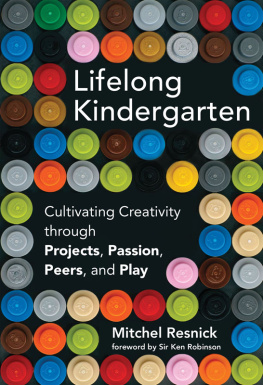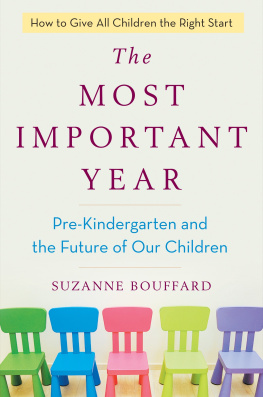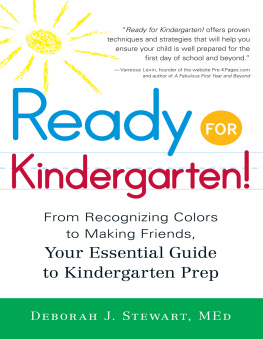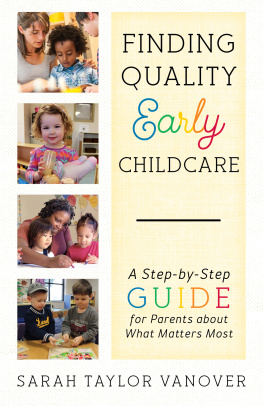
A Tool Kit for
Preparing Children
and Families
ANGLE SANCHO PASSE

Published by Redleaf Press
10 Yorkton Court
St. Paul, MN 55117
www.redleafpress.org
2010 by Angle Sancho Passe
All rights reserved. Unless otherwise noted on a specific page, no portion of this publication may be reproduced or transmitted in any form or by any means, electronic or mechanical, including photocopying, recording, or capturing on any information storage and retrieval system, without permission in writing from the publisher, except by a reviewer, who may quote brief passages in a critical article or review to be printed in a magazine or newspaper, or electronically transmitted on radio, television, or the Internet.
First edition 2010
Cover design by Jim Handrigan
Cover photo Fancy Photography / Veer
Interior typeset in Minion Pro and designed by Erin New
181716151413121123456789
Library of Congress Cataloging-in-Publication Data
Passe, Angle Sancho.
Is everybody ready for kindergarten? : a tool kit for preparing children
and families / Angle Sancho Passe.
p. cm.
Includes bibliographical references.
ISBN 978-1-6055-4181-5
1. Kindergarten. 2. KindergartenParent participation.I. Title.
LB1167.P37 2010
372.21'9dc22
2010003750
Printed on acid-free paper
To all the children getting ready for kindergarten together with their parents, care providers, and teachers


Contents
Demographics and the Learning Needs of Children in the
Twenty-first Century

Writing this book has been even more fun than I thought it would be. I enjoyed the solo work of sorting relevant research, hunting for words, and crafting sentences and paragraphs to make the content understandable and useful. I also loved the collaborative process of exchanging ideas, getting feedback, and receiving support. I am very grateful to many generous people who contributed so much in these intense months.
First, thank you to the children, parents, teachers, and providers who allowed me to observe and ask questions. They gave me great advice about how to make the transition to kindergarten better.
To Jim, my husband, for his warm and steady encouragement and that first cup of fresh coffee on the days that needed to start slow after a late night of writing.
To Oliver, my son, for his insightful critique of the first manuscript, during Christmas vacationa most precious holiday present.
To Alexia, my daughter, for her well-timed Hows the book coming? and her attentive listening.
To Jeanine, my mother, for her continuing pride in her former kindergartner.
To Marietta Rice and Beth Cutting, dear friends and early childhood and family education experts, for asking all the right questions at the beginning, during an invigorating fall weekend at the cabin.
To Kate Horst, Kathy Lathrop, and Sheryl Warner, colleagues and leaders in early childhood care and education, for their thoughtful reading of chapters and knowledgeable suggestions.
To Maureen Seiwert, executive director of early childhood education in the Minneapolis public schools, for the opportunity to contribute to the transition to kindergarten in her programs.
To Betty Cooke, for sharing historical perspectives and for her leadership in developing early learning standards in Minnesota.
To David Heath and Kyra Ostendorf at Redleaf Press for their trust in me and in this project.
To Jennifer Shepard and Laurie Herrmann, my editors, for their straightforward and comforting partnership.
And, of course, to all my colleagues, friends, and family members, too numerous to list by name, who took an interest in and periodically asked about the book or gave me encouragement and confidence.

My first day of kindergarten was on a bright day in January 1956 in Oran, Algeria. Despite the warmth of the North African winter sun shining on the school courtyard, I remember being cold. It was not a pleasant experience. I could see my mothers teary eyes as my new kindergarten teacher sternly told her to leave quickly. I was a smart little girl and eager to learn, but throughout that first year of school, it became obvious that Madame D did not approve of my learning style or my mothers parenting style, so she dourly predicted neither one of us would go far in life! We were glad for the June siroccos, the hot desert winds that signaled the beginning of summer vacation.
My own children started kindergarten in 1977 and 1980 at Marcy Open School in Minneapolis. They both had Greg as their kindergarten teacher. He was a wonderful educator, blending personal warmth and outstanding teaching skills to launch his young students academic careers. Greg was famous for his teddy bear parades, as well as for making stone soup and pulling loose teeth, an important rite of passage for five- and six-year-olds. When I volunteered in his classroom, I learned what an excellent kindergarten should look and feel like. This kindergarten was both developmentally appropriate and academically challenging. My childrens positive experiences made up for my own experience of kindergarten.
In the 1980s and early 1990s, as an early childhood teacher and parent educator in the Minneapolis public schools, I designed several transition-to-kindergarten projects, the most successful model being a workshop called Its Time to Think about Kindergarten. During three evenings, the workshop includes the topics Choosing a School, tips for picking a school; Your Childs Experience in Kindergarten, tips for understanding what children do and learn in kindergarten; and Your Experience as the Parent of a Kindergartner, options for family involvement. The sessions were offered to families with a child who would soon enter school. They could attend as many sessions as they wanted. An elementary school and the community education department cosponsored the program, and it was free to parents, who came to learn about how to prepare their child and themselves for this new experience. One of the kindergarten teachers hosted the group in his classroom, which was always a big hit as parents could visualize their child learning in that setting.
In the mid and late 1990s, as a district administrator, I maintained my focus on the transition to kindergarten by leading the School Readiness Collaborative. Part of my job was to work with community and district early childhood programs to ensure they implemented quality preschool services. I also worked with elementary schools to design transition-to-kindergarten activities.
Next page












